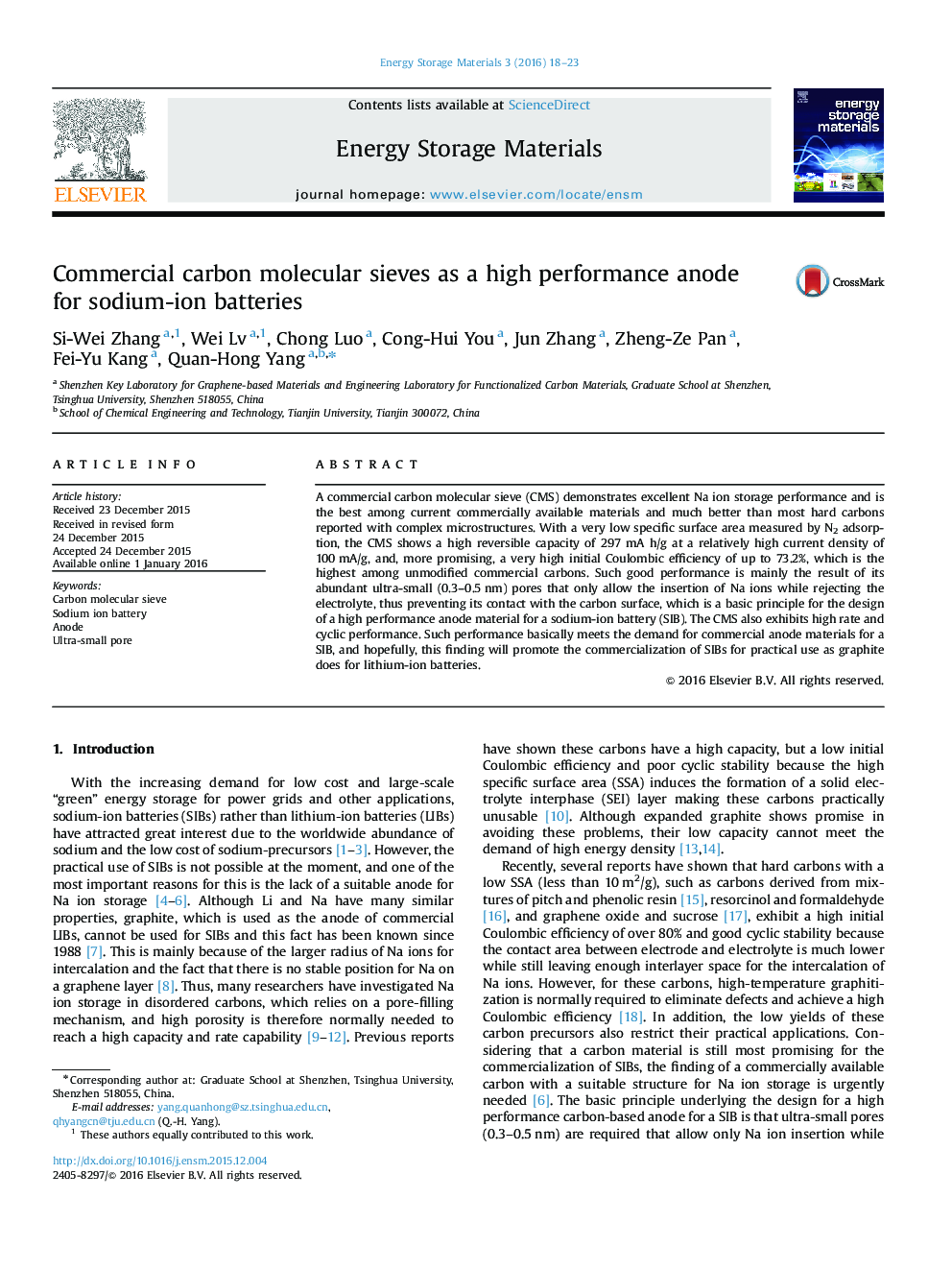| Article ID | Journal | Published Year | Pages | File Type |
|---|---|---|---|---|
| 1564630 | Energy Storage Materials | 2016 | 6 Pages |
A commercial carbon molecular sieve (CMS) demonstrates excellent Na ion storage performance and is the best among current commercially available materials and much better than most hard carbons reported with complex microstructures. With a very low specific surface area measured by N2 adsorption, the CMS shows a high reversible capacity of 297 mA h/g at a relatively high current density of 100 mA/g, and, more promising, a very high initial Coulombic efficiency of up to 73.2%, which is the highest among unmodified commercial carbons. Such good performance is mainly the result of its abundant ultra-small (0.3–0.5 nm) pores that only allow the insertion of Na ions while rejecting the electrolyte, thus preventing its contact with the carbon surface, which is a basic principle for the design of a high performance anode material for a sodium-ion battery (SIB). The CMS also exhibits high rate and cyclic performance. Such performance basically meets the demand for commercial anode materials for a SIB, and hopefully, this finding will promote the commercialization of SIBs for practical use as graphite does for lithium-ion batteries.
